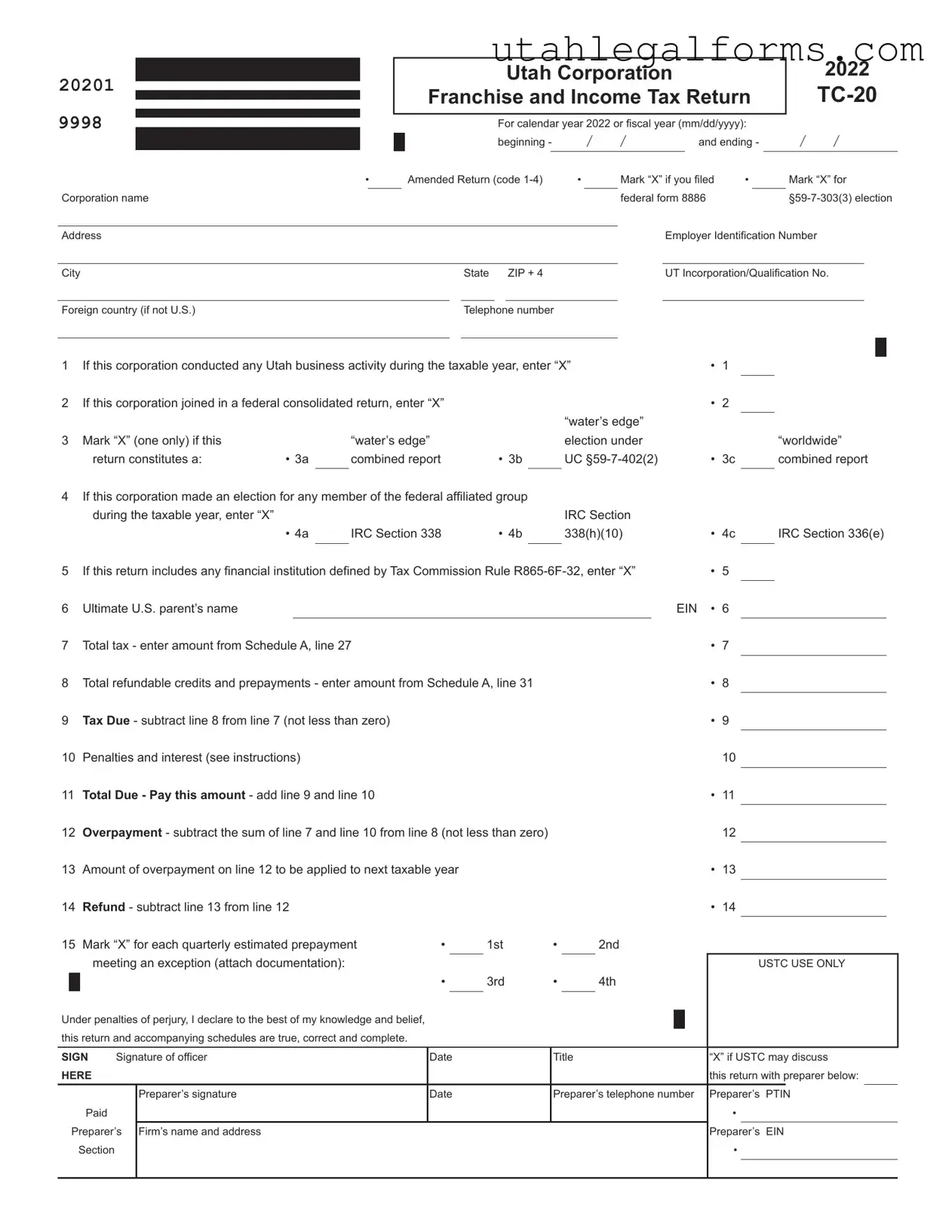Fill a Valid Utah Tc 20 Template
The Utah TC-20 form is the official document used by corporations to report their franchise and income tax obligations in the state of Utah for a given tax year. This form includes essential information such as the corporation's name, Employer Identification Number, and financial details necessary for tax calculation. Completing this form accurately is crucial for compliance with state tax laws, so be sure to fill it out by clicking the button below.
Access Utah Tc 20 Now
